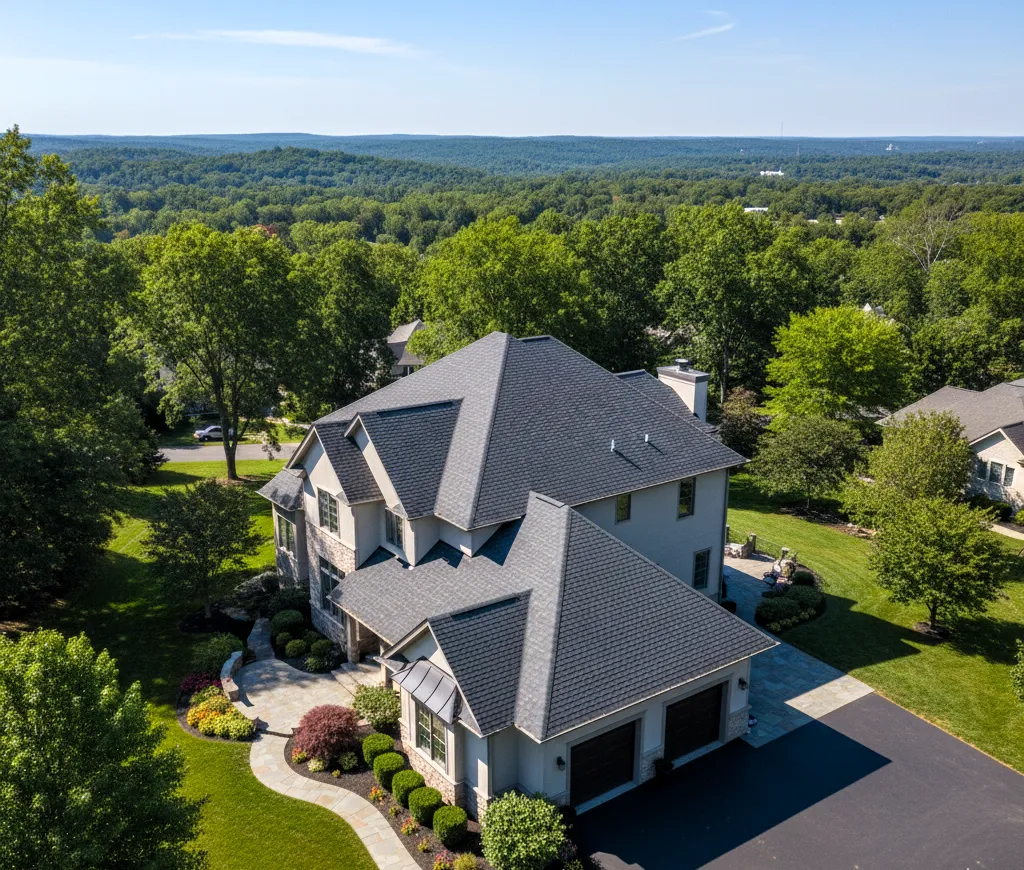
Top 5 Signs You Need a New Roof
What are the top five signs you need a new roof before it's too late?
Your roof is more than just a layer of shingles. It’s your home’s first and most critical line of defense against wind, rain, snow, heat, and everything in between. It protects your family, your belongings, and the structure of your home day after day.
Because most homeowners rarely get an up-close look at it, it’s easy to forget that your roof takes a beating with every storm, temperature swing, and blazing summer afternoon.
The Truth About Roof Damage
Roof damage doesn’t always announce itself with a dramatic leak or missing shingles.
Small issues like loose flashing, worn-out underlayment, or lost granules can quietly worsen over time.

If left unchecked, these seemingly minor problems can lead to hidden water damage, mold growth, reduced energy efficiency, and even structural rot.
At WeatherTek Home Exteriors, we believe prevention is always more affordable than repair. That’s why we help Maryland homeowners identify early warning signs before costly damage sets in.
Whether you’ve just weathered a storm or simply aren’t sure about your roof’s condition, our expert team provides honest evaluations and proactive solutions you can trust.
Ignoring the early signs can lead to mold, structural issues, and skyrocketing repair costs. Don’t wait until it’s too late. Here are the Top 5 Signs It’s Time to Consider a New Roof, especially if you live in Maryland’s unpredictable climate.
1. Missing, Cracked, or Curling Shingles
If your shingles are cracked, curling at the edges, or missing altogether, your roof may have aged out of its protective role. Once shingles lose their integrity, water seeps beneath the surface and causes wood rot, mold, and ceiling leaks.

❗️Pro Tip: After a heavy storm, walk around your home and check your yard or gutters for shingle pieces.
2. Water Leaks or Stains in the Attic or Ceiling
Notice brown or yellowish stains spreading across your ceiling? Or water dripping indoors during a storm? Those aren’t cosmetic issues. They’re clear warnings your roof is failing to keep moisture out.

When water penetrates your roofing system, it seeps into your attic, insulation, and drywall. This can cause rot, electrical risks, and mold growth. Mold doesn’t just damage your home. It also poses serious health hazards and can cost thousands to remove.
Even a small leak can snowball into major damage if ignored.
That’s why at WeatherTek, we always say, If you see a stain, it’s time to inspect. We offer free drone-assisted roof inspections to catch leaks before they become structural problems.
3. Moss, Algae, or Mold Growth
Green moss patches or dark streaks of algae might seem harmless, but they’re actually signs your roof is holding moisture.

Moss acts like a sponge, trapping water against your shingles and breaking down their protective granules.
Algae feeds on the limestone in your shingles and weakens them from the inside out.
Mold can spread beneath your roofline, threatening both your home’s structure and indoor air quality.
If you see green patches or dark streaks, your roof is likely retaining water and nearing the end of its life.
These problems often appear on shaded roof areas where sunlight can’t dry lingering moisture. If left untreated, moss and algae cause soft spots, leaks, and premature roof failure.
4. Your Roof Is 15–20+ Years Old
Most asphalt shingle roofs last about 15 to 25 years. Even if it looks fine from the ground, the layers beneath may already be brittle or poorly ventilated.

🔍 Not sure how old your roof is? We can help you find out during your free on-site evaluation.

5. Spiking Energy Bills
If your heating or cooling bills have suddenly climbed, your roof could be the reason.
A failing roof allows energy to escape through worn shingles, damaged underlayment, or poor ventilation.
A new, energy-efficient roof can dramatically reduce your utility costs while keeping your home comfortable year-round.
The Weather in Maryland Is No Joke
From thunderstorms and humidity to winter snow and coastal winds, Maryland’s weather tests your roof year-round. If your roof is already compromised, each new season only accelerates the damage.
Protect Your Home Before It’s Too Late
Your home is likely your biggest investment, and your roof is what keeps it safe, dry, and efficient. Don’t wait for a major leak or storm to expose hidden problems.
Let WeatherTek Home Exteriors give you peace of mind with a free drone roof inspection and honest advice about your next steps.
Our locally-owned team is known for integrity, expertise, and craftsmanship you can count on.
📞 Call Us Now: (443) 332-3035
📅 Click Here to Book Your Free Roof Evaluation Today!
